Climate Change
How urban green can keep tropical cities cool
6 min
The concept of "adopting an egg-like sensor" isn't something that you hear every day. However, some residents of Paramaribo, the capital of Suriname, are now proudly calling themselves "egg parents". This refers to their involvement in the project Green Paramaribo - developed by Tropenbos Suriname and the ITC Faculty
In this story, we will discover why embarking on the journey of Green Paramaribo became the spark of a sustainable movement in the Surinamese capital.
Tropenbos Suriname is an NGO committed to the sustainable management and preservation of trees. Their work generates and gathers knowledge on forests, climate, ecosystem services, and other related topics, and transfers this knowledge to users of the forest.
Based in the city centre of Paramaribo, the members of Tropenbos Suriname noticed that the trees in green spaces in the city dramatically diminished over the years. With a mission to start preserving not only forests but also urban environments, Green Paramaribo was born.
The project aimed to provide citizens with tools and knowledge about the effect of green spaces in the city. They invited the ITC Faculty to join in this twinning project due to the Faculty's expertise in Geo-Information Science and Remote Sensing for urban planning and natural resources. And there, dear reader, is where everything started.
At the initial stage of the project, Tropenbos Suriname members and ITC researchers brainstormed all sorts of creative ideas to raise awareness about Green Paramaribo and to gather volunteers for a monitoring network.
During the pandemic, they organized live streams – called "Green Conversations" – where they would discuss and debate topics related to green spaces, such as urban health and cooling effects. These conversations motivated a lot of people to join the monitoring network in the upcoming stages of the project. They also organized two thrilling scavenger hunts with over 100 participants of all ages, who roamed around green areas, solving questions, and discovering new spaces.

The scavenger hunts were a success among people of all ages.
Researchers also organized a drawing contest in primary schools, and a counterpart design competition for future professional urban planners, where they were challenged to redesign parts of the city incorporating green resources.
Due to these activities, the topic of "urban green spaces" started to emerge naturally in the conversations of locals. Citizens were more aware of the problems that emerged from dismantling green spaces. With this topic in the minds of citizens, it was time to kick off stage 2 and set up a monitoring network.
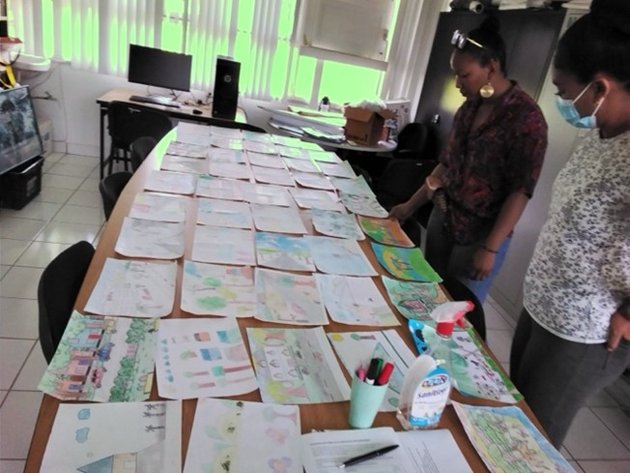
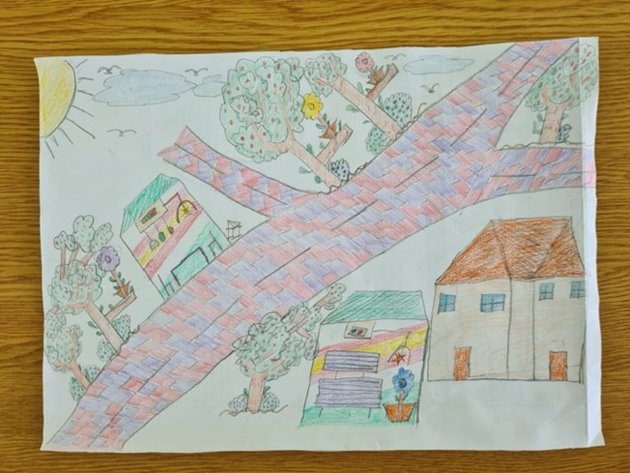
Creativity was unleashed during the drawing contest in primary schools.
After raising awareness, the next goal of the project was to develop a data dashboard. This dashboard would be used by citizens and policymakers to visualise the cooling effects of urban green spaces and assist in urban plans. In order to gather environmental data for this dashboard, setting up a network of citizen collaborators was essential.
Around 30 small sensors - jokingly referred to as "eggs" by the researchers because of their size and shape - were spread across the city. Some of them were placed in public spaces, such as parks and streets, while others were hosted by locals in their gardens. Luckily, the green conversations and fun activities organised during the previous months helped spread the word about this project and gathered many volunteers.
After a training session, the participants received their adoptive egg and an instruction booklet. From then on, the sensors were installed in the gardens of the new "egg parents" to collect data, withstanding the elements of nature and other unforeseen threats.
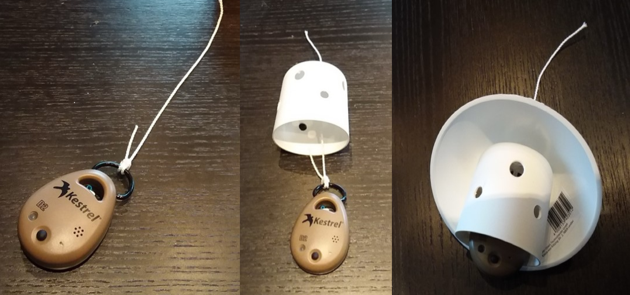
Pictures taken as part of the instructions to set up the devices.
Protecting the sensors with birdhouse-like structures was not enough to shelter them from all the external menaces they would face in the upcoming years; due to rain and humidity, moss started to grow around some egg sensors. Others were even victims of hungry termites looking for their new meal, and unfortunately, thieves stealing the "eggs" was also a problem.
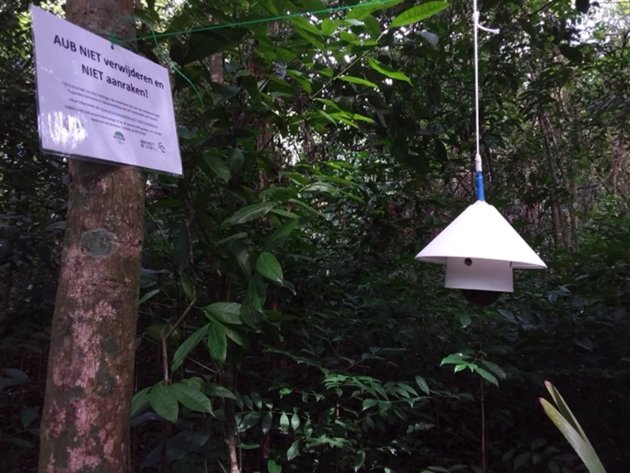
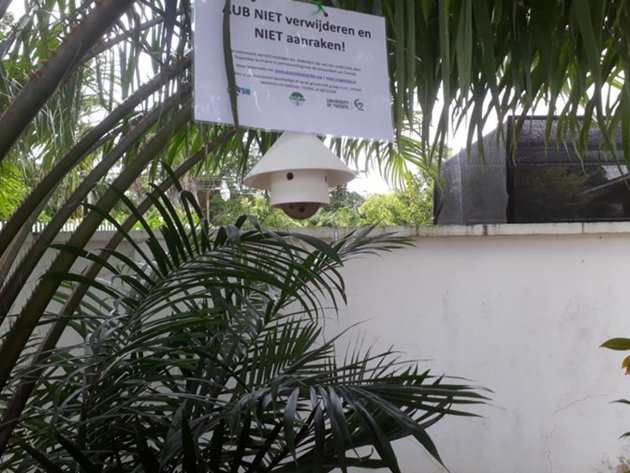
Sensors were hung outside to collect data.
However, the egg-looking sensors proved to be quite sturdy and survived. Originally designed to measure the temperature underground, they withstand a lot of stress and can even be buried.
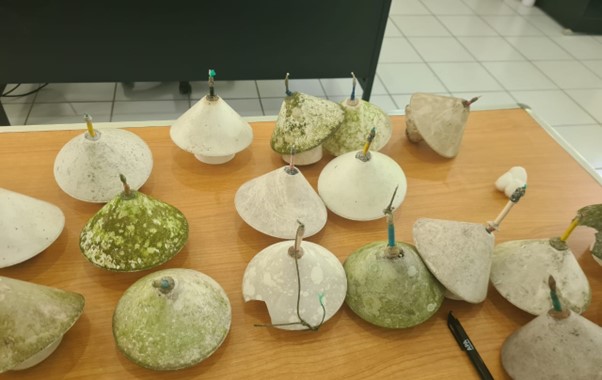
How the sensors looked like after hanging on the outside for several years.
The role of the parents was not only to watch after their sensor eggs but to regularly connect them to their mobiles and send the data they gathered to the project developers. It was not an easy process, as they had to follow 6 steps every single month during the four years that the project lasted: connecting the sensors to their phones; logging the data from the sensors; storing it in a CSV; emailing it to the project staff; checking the battery level; cleaning the housing if necessary, and reporting any changes in the direct surroundings of the egg (e.g. if trees were planted, or a path was paved).
Researchers took the data and transformed it into a practical dashboard, generating a complete overview of the necessary environmental data for citizens and policymakers to make Paramaribo greener.
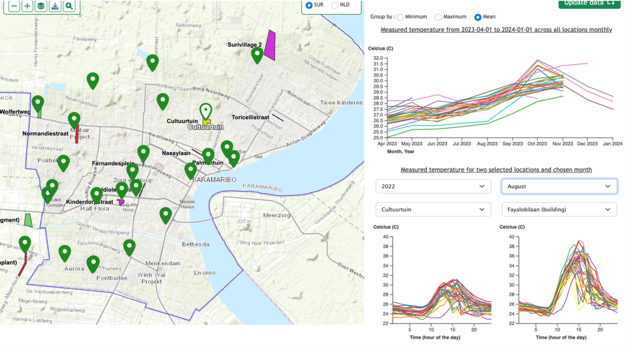
The dashboard shows temperature changes in different locations in Paramaribo. Click here to view the dashboard online.
The project, from the fun awareness-raising activities to the dedication of the monthly data logging, left a mark on the lives of the volunteers involved. The team spent four years collaborating with one end goal in mind: to protect the green spaces of their city. Green Paramaribo finished at the end of 2023, and volunteers were rewarded with a tote bag with the inscription "Proud citizen scientist". However, even at the beginning of 2024, researchers continued to receive data from some parents who refused to let go of their "egg".
Now, most of the sensors have been re-purposed and delivered to elementary schools in Paramaribo, where the learnings of the project have been transformed into educational materials. The conversation about preserving green spaces that Green Paramaribo started has found a place in the discussions between decision-makers and other stakeholders about the future of urban green.
There might be an end to the project, but there's not one for this story. While children learn how to measure temperatures, and policymakers debate how to make the city greener, out in the tropical streets of Paramaribo you will still find locals calling themselves "egg parents", walking around with a tote bag that reads "proud citizen scientist".
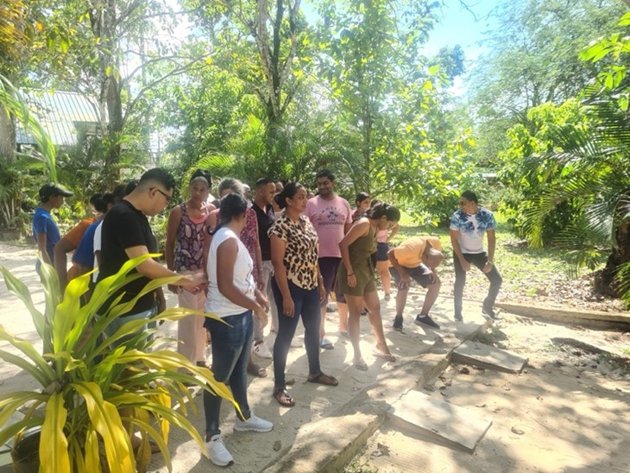
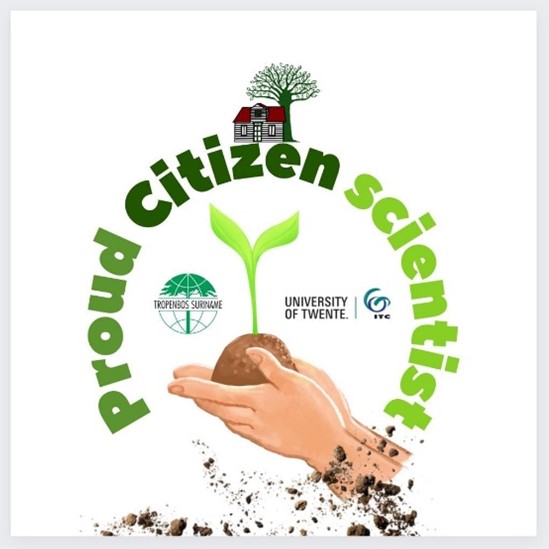
Top: the citizen scientists. Bottom: the design on the tote bags they received at the final gathering.